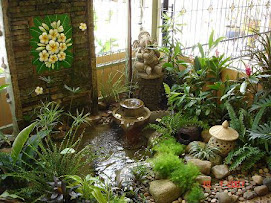hydroponics gardening requires planning
By Susan Slobac
If you are a gardener who wants to garden but has obstacles to overcome in terms of soil and climate, why not give hydroponic gardening a try? Hydroponics is a method of gardening in which you grow plants without using any soil. It has been used in parched African lands as well as by NASA scientists, where the land was unsuitable for growing crops, or there was no soil available. A hydroponic garden does require some planning, however, in order for it to work successfully.
There are several systems from which you will want to choose. What you finally decide upon will depend on several factors, including the space you can devote to gardening, the lights you will use, how much you wish to invest in the project and how much time you have available to put the system together and to maintain it properly. In the planning phase you will also want to give some thought to expansion of the system and which sorts of plants you would like to grow. You will also need to think about any ongoing costs in terms of necessary supplies and equipment.
Some systems are active or passive in terms of the delivery of the nutrients to the plants. Because the plants are growing in water, an active system uses a pump to aerate the water and to push the nutrient solution around the plant's roots, where the plant can then pick up the nutrient. Passive systems use a wick that the plant uses to bring the nutrients to the roots, and they do not use a pump at all.
Another planning decision will be to select from a water-based or a media-based system. The medium is what the plant grows in, and it is never soil. Instead, medium can include perlite, vermiculite and peat moss, to name only a few. A water-based system often does not use media, and so the plants will need to be supported in some manner out of the water. You can use a trellis for this purpose. A system that is media based provides support to the plants and it also keeps the nutrient solution where it needs to be, by the plant's roots.
The proper lighting will also require adequate consideration. You will probably need to use some type of artificial growing lights in order to provide the plants with enough light to survive, especially if you will be gardening during the dark winter months. A full-spectrum light is an excellent choice for growing plants, because it mimics natural sunlight. Both fluorescent and HID lights work well in these situations.
With some careful planning, you will likely have great success with hydroponic plant gardening.
About the author:
Susan Slobac discusses the proper care and maintenance of hydroponic grow lights. Since discovering how easy it is to grow food all year round, hydroponic gardening has become a way of life for her. Susan features seasoned advice to help aid you in choosing the right grow lamps for your needs.
Article Source: http://www.Free-Articles-Zone.com



No comments:
Post a Comment